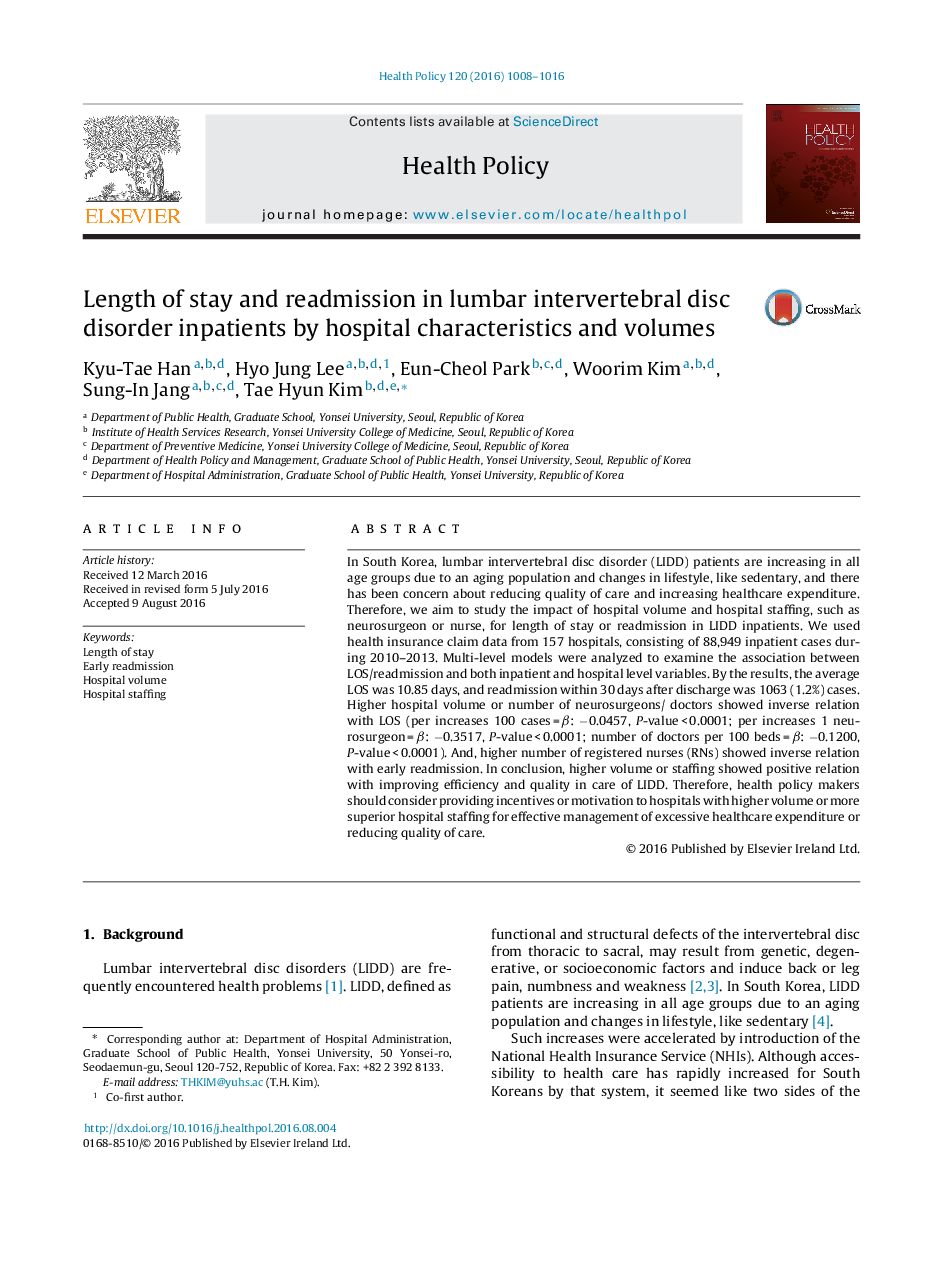| Article ID | Journal | Published Year | Pages | File Type |
|---|---|---|---|---|
| 5723519 | Health Policy | 2016 | 9 Pages |
â¢National health insurance claim data used in our study.â¢Hospital volume had inverse association with length of stay.â¢Higher number of neurosurgeons, doctors, and nurses provided more effective management.
In South Korea, lumbar intervertebral disc disorder (LIDD) patients are increasing in all age groups due to an aging population and changes in lifestyle, like sedentary, and there has been concern about reducing quality of care and increasing healthcare expenditure. Therefore, we aim to study the impact of hospital volume and hospital staffing, such as neurosurgeon or nurse, for length of stay or readmission in LIDD inpatients. We used health insurance claim data from 157 hospitals, consisting of 88,949 inpatient cases during 2010-2013. Multi-level models were analyzed to examine the association between LOS/readmission and both inpatient and hospital level variables. By the results, the average LOS was 10.85 days, and readmission within 30 days after discharge was 1063 (1.2%) cases. Higher hospital volume or number of neurosurgeons/ doctors showed inverse relation with LOS (per increases 100 cases = β: â0.0457, P-value < 0.0001; per increases 1 neurosurgeon = β: â0.3517, P-value < 0.0001; number of doctors per 100 beds = β: â0.1200, P-value < 0.0001). And, higher number of registered nurses (RNs) showed inverse relation with early readmission. In conclusion, higher volume or staffing showed positive relation with improving efficiency and quality in care of LIDD. Therefore, health policy makers should consider providing incentives or motivation to hospitals with higher volume or more superior hospital staffing for effective management of excessive healthcare expenditure or reducing quality of care.
